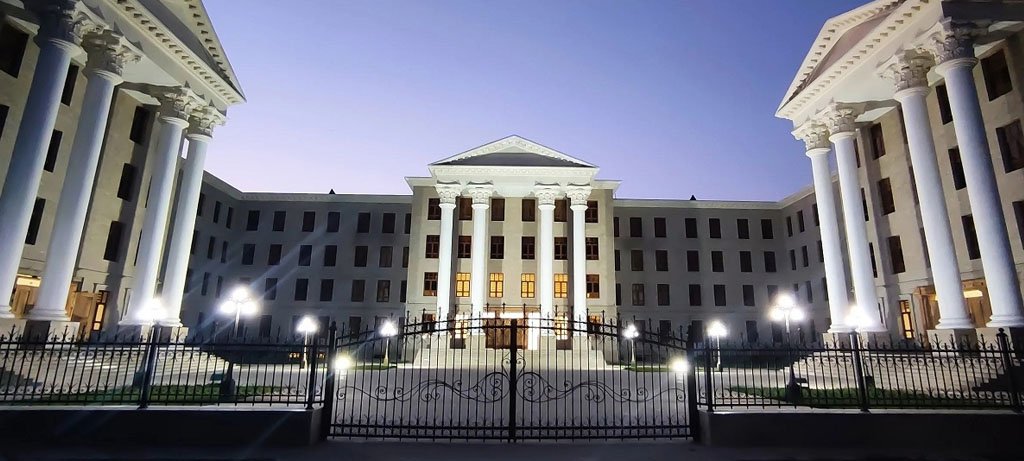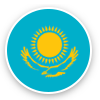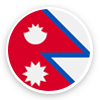
Month of intake in Samarkand State Medical Institute
Sep.
Year of Establishment
1994
Duration of MBBS Program
6 Years
Language of Instruction
English
Recognition
MCI & WHO Approved
Month of intake in Samarkand State Medical Institute
: September
Year of Establishment: 1994
Duration of MBBS Program : 6 Years
Language of Instruction: English
Recognition: MCI & WHO Approved
Year of Establishment: 1994
Duration of MBBS Program : 6 Years
Language of Instruction: English
Recognition: MCI & WHO Approved
About Samarkand State Medical Institue
Samarkand State Medical Institute is the oldest medical university in Central Asia, providing high-quality training of highly qualified medical personnel. The institute is located in the most beautiful city of Samarkand – from time immemorial it has been a center of scientific thought and outstanding culture.
The history of the Samarkand State Medical Institute dates back to May 1930, when the Uzbek State Medical Institute was founded by the Resolution of the Council of People’s Commissars of Uzbekistan No. 80 of May 7. Over the years of the Institute’s activities, over 40,000 graduates have been trained and graduated.
Currently, study at the university is carried out at 6 faculties and in 8 areas of undergraduate studies:
The history of the Samarkand State Medical Institute dates back to May 1930, when the Uzbek State Medical Institute was founded by the Resolution of the Council of People’s Commissars of Uzbekistan No. 80 of May 7. Over the years of the Institute’s activities, over 40,000 graduates have been trained and graduated.
Currently, study at the university is carried out at 6 faculties and in 8 areas of undergraduate studies:
Faculty of General medicine
Faculty of Pediatric medicine
Faculty of Postgraduate education and training
Faculty of Medical Pedagogy
Faculty of Higher educational nursing
Faculty of Refresher courses Medical College Teachers
Faculty of Medical prevention
Faculty of Pharmacy
Faculty of Pediatric medicine
Faculty of Postgraduate education and training
Faculty of Medical Pedagogy
Faculty of Higher educational nursing
Faculty of Refresher courses Medical College Teachers
Faculty of Medical prevention
Faculty of Pharmacy
– Started in 1930
– Started in 1963
– Started in 1981
– Started in 2005
– Started in 2005
– Started in 2013
– Started in 2016
– Started in 2018
– Started in 1963
– Started in 1981
– Started in 2005
– Started in 2005
– Started in 2013
– Started in 2016
– Started in 2018
During its activities at the institute, accents and priorities changed, but the main tasks remained unchanged: training of highly qualified medical personnel, scientific research, development of cooperation with other universities and leading research centers in the country, as well as in the countries of the near
and far abroad. All this, of course, contributes to the development of priority areas of medical science, the development of innovative forms of medical education, the training of highly qualified specialists for practical public health.
Keeping up with the times, the staff of the institute is responsive to all the demands of reforms and transformations that are taking place in the sphere of the education and health care systems of our country.
Since 2005, a new milestone has begun in the history of the institute. It was necessary to create decent conditions for high-quality educational process and scientific activities of the teaching staff, in order to significantly increase their impact.
At the institute, in order to ensure a high-quality educational process, as well as to conduct research, lecture halls, classrooms and clinical clinical laboratories are equipped with the latest information base technologies, multimedia projectors, video and audio systems, distance learning has been introduced.
The educational process is supported by modern information and communication Internet technologies using electronic and modular training systems (moodle.sammi.uz), where electronic educational and methodological materials are placed in all disciplines that are taught at the institute, including in English for foreign students. Also, in all departments there is a student scientific society (SSS). Of course, all this allows to conduct classes at a high modem level, corresponding to the world educational systems.
Keeping up with the times, the staff of the institute is responsive to all the demands of reforms and transformations that are taking place in the sphere of the education and health care systems of our country.
Since 2005, a new milestone has begun in the history of the institute. It was necessary to create decent conditions for high-quality educational process and scientific activities of the teaching staff, in order to significantly increase their impact.
At the institute, in order to ensure a high-quality educational process, as well as to conduct research, lecture halls, classrooms and clinical clinical laboratories are equipped with the latest information base technologies, multimedia projectors, video and audio systems, distance learning has been introduced.
The educational process is supported by modern information and communication Internet technologies using electronic and modular training systems (moodle.sammi.uz), where electronic educational and methodological materials are placed in all disciplines that are taught at the institute, including in English for foreign students. Also, in all departments there is a student scientific society (SSS). Of course, all this allows to conduct classes at a high modem level, corresponding to the world educational systems.
Faculties Of Samarkand State Medical Institute
Departments of Medical Faculty (19 departments)
Departments of Pediatric Faculty (14 departments)
Departments of Higher Nursing (5 departments)
Department of Medical Peda: (5 departments)
Departments of Dentistry Faculty (4 departments)
MBBS From Samarkand State Medical Institute
Medical faculty of Samarkand State Medical Institute was started in 1930 and it is oldest Medical institute in central Asia. SAMMI campus has all the premium world class facilities.
Classroom:
The institution has study programs focused on n practical training that allows them to understand the concepts thoroughly, through modern medical equipment, including ultrasound diagnostic devices, ECG, Echocardiography, Echoencephalography, Endoscopy, gamma scanners, laser therapy equipment, operating microscope, video-endoscopic devices, incubators, anesthesia apparatus etc. The institution has a team of professors and tutors, who are masters in their fields and can put to use the basis of modern techniques and new technologies of training to ensure high quality training of specialists with higher medical education.
Clinical Rotation:
Sammi 1 Clinic is one of the first built in Central Asia, a large, multidisciplinary hospital. Its construction was started in 1926 according to the most advanced Projects of that time end i in 1929 began is activities under the name “Republican Hospital’, since at that time the city of Samarkand was * the capital of Uzbekistan. During this historical period, more than 4 million patients were treated in the clinic, about 200 thousand newborns were born, more than 200 thousand complex operations of various volumes were performed. About 3 million patients deraert a medical examination end were examined on an outpatient basis.
Clinical Rotation is as an integral part of the Institute, serves as the main educational, scientific and medical base for the training of medical personnel. Over the years of independence, profound changes have also taken place in the clinic’s activities: restructuring and modemization of departments, major} fepairs and reconstruction of buildings and communications, and material and technical facilities have been strengthened. More than 200 modern medical devices and high-tech equipment were installed, manufactured in Japan, Germany, Russia, the USA, South Korea, India, China, Great Britain and other} countries. Sammi 2 Clinic Startes in the year 1990 and is a specialized multidisciplinary research clinical institution of the Ministry of Health of the Republic of Uzbekistan that provides highly qualified round-the-clock surgical care to the population of the south-western region of the Republic of Uzbekistan – Samarkand, Jizzakh, Navoi, Bukhara, Kashkadarya Surkhandarya, Khorezm and Karakalpakstan.
Clinical Rotation is as an integral part of the Institute, serves as the main educational, scientific and medical base for the training of medical personnel. Over the years of independence, profound changes have also taken place in the clinic’s activities: restructuring and modemization of departments, major} fepairs and reconstruction of buildings and communications, and material and technical facilities have been strengthened. More than 200 modern medical devices and high-tech equipment were installed, manufactured in Japan, Germany, Russia, the USA, South Korea, India, China, Great Britain and other} countries. Sammi 2 Clinic Startes in the year 1990 and is a specialized multidisciplinary research clinical institution of the Ministry of Health of the Republic of Uzbekistan that provides highly qualified round-the-clock surgical care to the population of the south-western region of the Republic of Uzbekistan – Samarkand, Jizzakh, Navoi, Bukhara, Kashkadarya Surkhandarya, Khorezm and Karakalpakstan.

















